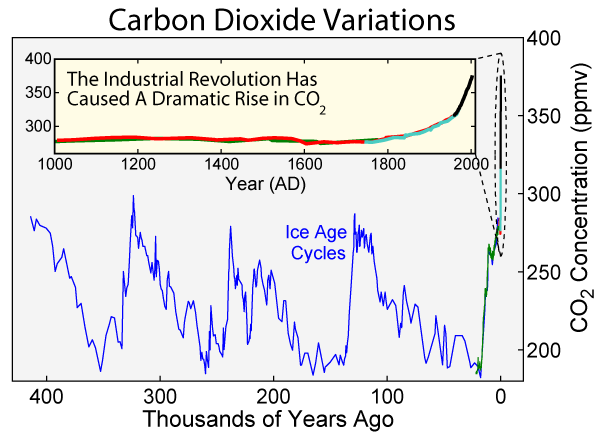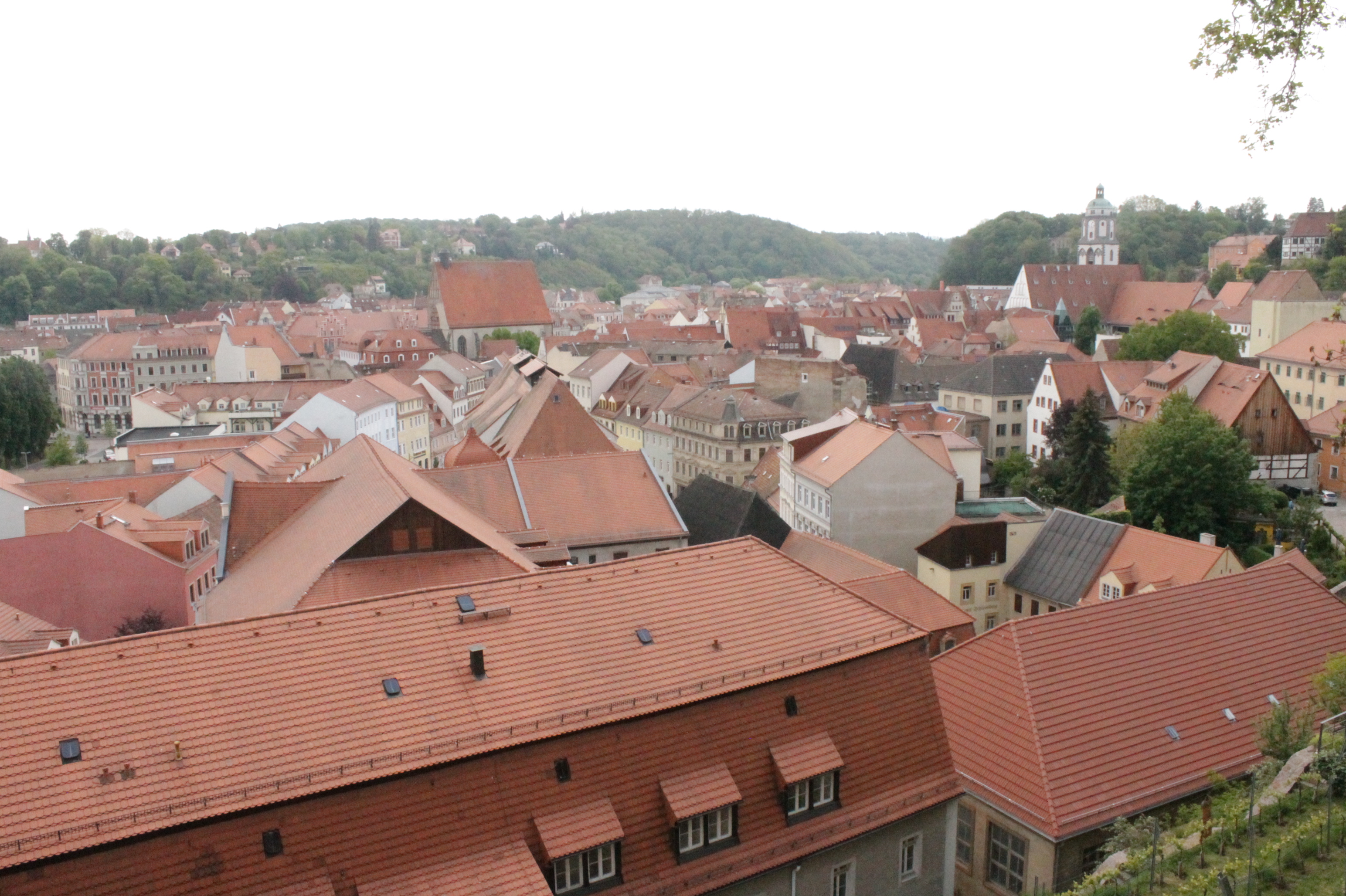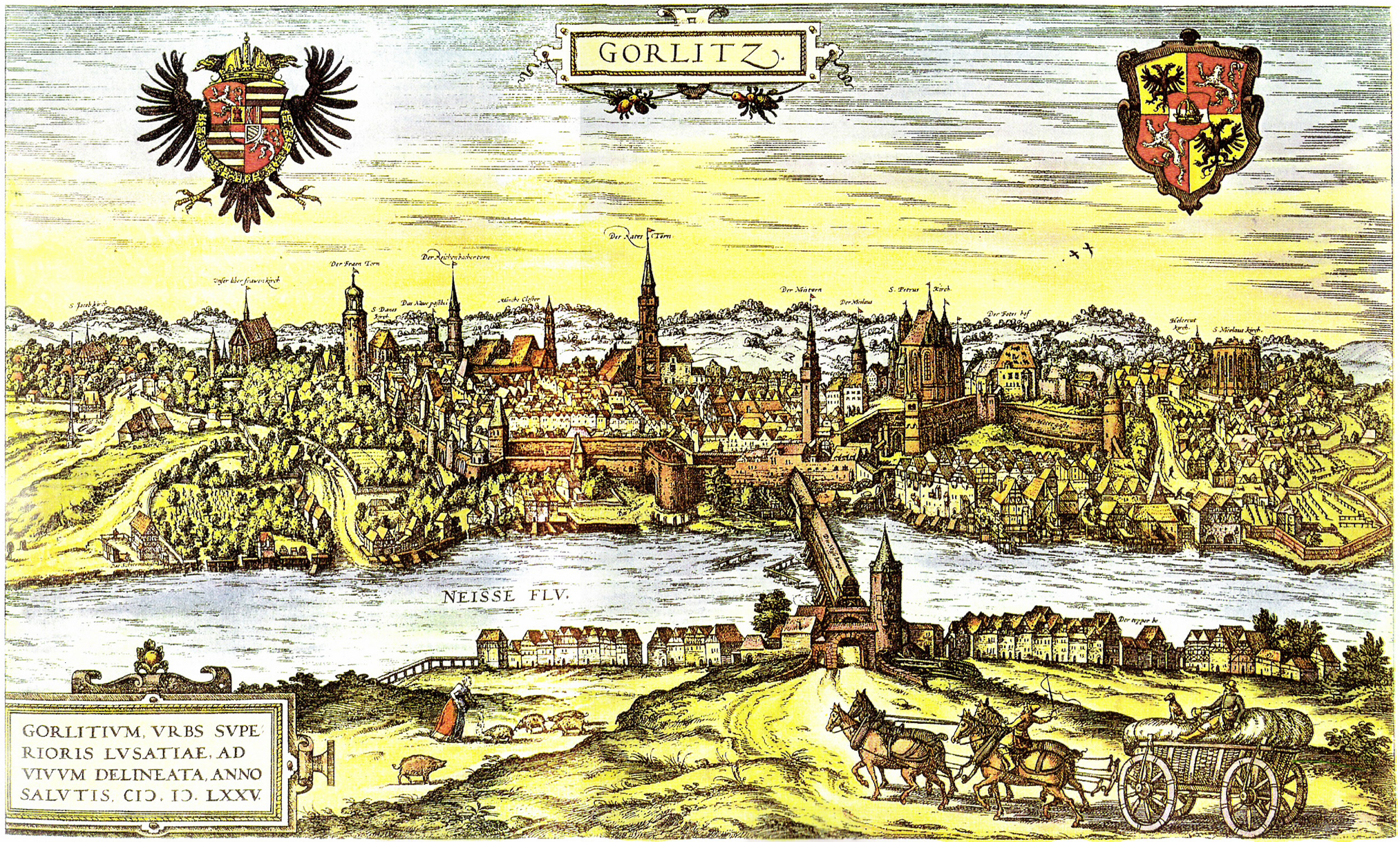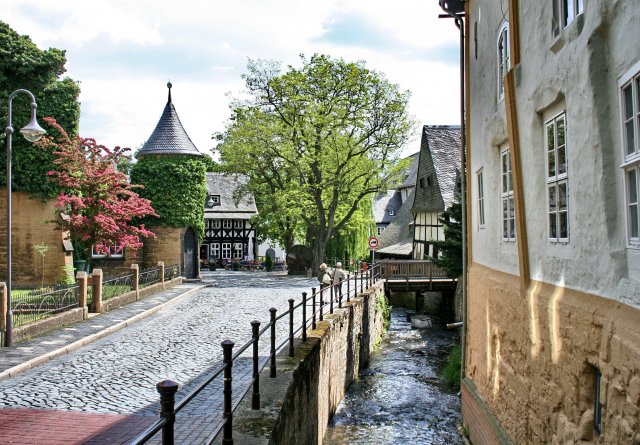|
Saalian
The Saale glaciation or Saale Glaciation, sometimes referred to as the Saalian glaciation, Saale cold period (german: Saale-Kaltzeit), Saale complex (''Saale-Komplex'') or Saale glacial stage (''Saale-Glazial'', colloquially also the ''Saale-Eiszeit'' or ''Saale-Zeit''), covers the middle of the three large glaciations in Northern Europe and the northern parts of Eastern, Central and Western Europe by the Scandinavian Inland Ice Sheet between the older Elster glaciation and the younger Weichselian glaciation, also called the Last Glacial Period. Age and definitions It succeeded the Holstein interglacial and was followed by the Eemian interglacial. The Saale complex is currently estimated, depending on the source, as existing from around 300,000 to 130,000 years ago or 347,000 to 128,000 years ago (duration: around 219,000 years), roughly contemporaneous with the glaciation of the Riss Glacial in the Alpine region. The actual "ice age" includes only part of the Saale glaciation ... [...More Info...] [...Related Items...] OR: [Wikipedia] [Google] [Baidu] |
Wolstonian Stage
The Wolstonian Stage is a middle Pleistocene stage of the geological history of Earth from approximately 374,000 until 130,000 years ago. It precedes the Eemian Stage in Europe and follows the Hoxnian Stage in the British Isles. It is also approximately analogous to the Warthe and Saalian stages in northern Europe; the Riss glaciation in the Alps; and the Illinoian Stage in North America. It is equivalent to Marine isotope stages (MIS) 10 through 6. MIS 10, 8 and 6 were glacial periods and 9 and 7 were interglacials. It is named after Wolston in the English county of Warwickshire. Description The Wolstonian Stage is a middle Pleistocene stage of the geological history of Earth that precedes the Ipswichian Stage ( Eemian Stage in Europe) and follows the Hoxnian Stage in the British Isles. The Wolstonian Stage apparently includes three periods of glaciation. The Wolstonian Stage is temporally analogous to the Warthe Stage and Saalian Stage in northern Europe and th ... [...More Info...] [...Related Items...] OR: [Wikipedia] [Google] [Baidu] |
Eemian Interglacial
The Eemian (also called the last interglacial, Sangamonian Stage, Ipswichian, Mikulin, Kaydaky, penultimate,NOAA - Penultimate Interglacial Period http://www.ncdc.noaa.gov/global-warming/penultimate-interglacial-period Valdivia or Riss-Würm) was the interglacial period which began about 130,000 years ago at the end of the Penultimate Glacial Period and ended about 115,000 years ago at the beginning of the Last Glacial Period. It corresponds to Marine Isotope Stage 5e. Although sometimes referred to as the "last interglacial" (in the "most recent previous" sense of "last"), it was the second-to-latest interglacial period of the current Ice Age, the most recent being the Holocene which extends to the present day (having followed the last glacial period). The prevailing Eemian climate was, on average, around 1 to 2 degrees Celsius (1.8 to 3.6 Fahrenheit) warmer than that of the Holocene. During the Eemian, the proportion of in the atmosphere was about 280 parts per million. The ... [...More Info...] [...Related Items...] OR: [Wikipedia] [Google] [Baidu] |
Elster Glaciation
The Elster glaciation (german: Elster-Kaltzeit, ''Elster-Glazial'' or ''Elster-Zeit'') or, less commonly, the Elsterian glaciation, in the older and popular scientific literature also called the Elster Ice Age (''Elster-Eiszeit''), is the oldest known ice age that resulted in the large-scale glaciation of North Germany. It took place 500,000–300,000 years ago. It succeeded a long period of rather warmer average temperatures, the Cromerian Complex. The Elster was followed by the Holstein interglacial and the Saale glaciation. The glacial period is named after the White Elster, a right tributary of the Saale. Controversial correlations Traditionally, Elster was correlated with the Mindel glaciation of the Alps and the Anglian glaciation of Great Britain and Ireland. Analysis in the 1950s of oxygen isotopes in deep sea core samples introduced a global glacial history, with warm and cold phases identified by marine isotope stages (MIS). This identified two glacial stages in the t ... [...More Info...] [...Related Items...] OR: [Wikipedia] [Google] [Baidu] |
Weichselian Glaciation
The Weichselian glaciation was the last glacial period and its associated glaciation in northern parts of Europe. In the Alpine region it corresponds to the Würm glaciation. It was characterized by a large ice sheet (the Fenno-Scandian ice sheet) that spread out from the Scandinavian Mountains and extended as far as the east coast of Schleswig-Holstein, northern Poland and Northwest Russia. This glaciation is also known as the Weichselian ice age (german: Weichsel-Eiszeit), Vistulian glaciation, Weichsel or, less commonly, the Weichsel glaciation, Weichselian cold period (''Weichsel-Kaltzeit''), Weichselian glacial (''Weichsel-Glazial''), ''Weichselian Stage'' or, rarely, the Weichselian complex (''Weichsel-Komplex''). In Northern Europe it was the youngest of the glacials of the Pleistocene ice age. The preceding warm period in this region was the Eemian interglacial. The last cold period began about 115,000 years ago and ended 11,700 years ago. Its end corresponds with the en ... [...More Info...] [...Related Items...] OR: [Wikipedia] [Google] [Baidu] |
Eisleben
Eisleben is a town in Saxony-Anhalt, Germany. It is famous as both the hometown of the influential theologian Martin Luther and the place where he died; hence, its official name is Lutherstadt Eisleben. First mentioned in the late 10th century, Eisleben is divided into old and new towns (Altstadt and Neustadt), the latter of which was created for Eisleben's miners in the 14th century. As of 2020, Eisleben had a population of 22,668. It lies on the Halle–Kassel railway. History Eisleben was first mentioned in 997 as a market called Islebia, and in 1180 as a town. The counts of Mansfeld governed the area until the 18th century. During the Protestant Reformation, Count Hoyer VI of Mansfeld-Vorderort (1477–1540) remained loyal to his Catholic faith, but the family's Mittelort and Hinterort branches sided with Martin Luther, who ended up dying in Eisleben, as discussed below. The German Peasants' War devastated the area, about a century before the Thirty Years War. Count Albert V ... [...More Info...] [...Related Items...] OR: [Wikipedia] [Google] [Baidu] |
Zeitz
Zeitz ( hsb, Žič) is a town in the Burgenlandkreis district, in Saxony-Anhalt, Germany. It is situated on the river White Elster, in the triangle of the federal states Saxony-Anhalt, Thuringia and Saxony. History Zeitz was first recorded under the name Cici in the synode of Ravenna in 967. Between 965 and 982, it was the chief fortress of the March of Zeitz. Zeitz was a bishop's residence between 968 and 1028, when it was moved to Naumburg. Beginning at the end of the 13th century, the bishops again resided in their castle at Zeitz. The Herrmannsschacht (built in 1889) is one of the oldest brick factories in the world. The city was captured by Swedish troops during the Thirty Years' War and was given to Electorate of Saxony in 1644. It was centre of Saxe-Zeitz between 1657 and 1718 before returning to Electorate (Became Kingdom of Saxony in 1806). In 1815, it was given to Kingdom of Prussia and became district (kreis) centre in Merseburg region (regierungsbezirk) of Provinc ... [...More Info...] [...Related Items...] OR: [Wikipedia] [Google] [Baidu] |
Meissen
Meissen (in German orthography: ''Meißen'', ) is a town of approximately 30,000 about northwest of Dresden on both banks of the Elbe river in the Free State of Saxony, in eastern Germany. Meissen is the home of Meissen porcelain, the Albrechtsburg castle, the Gothic Meissen Cathedral and the Meissen Frauenkirche. The ''Große Kreisstadt'' is the capital of the Meissen district. Names * german: Meißen * french: Meissen, ou, selon l'orthographe allemande: ''Meißen''; en français suranné: ''Misnie'' * la, Misnia, Misena, Misnensium * pl, Miśnia * cs, Míšeň * hsb, Mišno * dsb, Mišnjo * zh, 迈森 (pinyin: ) History Meissen is sometimes known as the "cradle of Saxony". It grew out of the early West Slavic settlement of ''Misni'' inhabited by Glomatians and was founded as a German town by King Henry the Fowler in 929. In 968, the Diocese of Meissen was founded, and Meissen became the episcopal see of a bishop. The Catholic bishopric was suppressed in 1581 ... [...More Info...] [...Related Items...] OR: [Wikipedia] [Google] [Baidu] |
Görlitz
Görlitz (; pl, Zgorzelec, hsb, Zhorjelc, cz, Zhořelec, East Lusatian dialect: ''Gerlz'', ''Gerltz'', ''Gerltsch'') is a town in the German state of Saxony. It is located on the Lusatian Neisse River, and is the largest town in Upper Lusatia as well as the second-largest town in the region of Lusatia, after Cottbus. Görlitz is the easternmost town in Germany (easternmost village is Zentendorf (Šćeńc)), and lies opposite the Polish town of Zgorzelec, which was the eastern part of Görlitz until 1945. The town has approximately 56,000 inhabitants, which make Görlitz the sixth-largest town in Saxony. It is the seat of the district of Görlitz. Together with Zgorzelec, it forms the Euro City of Görlitz/Zgorzelec, which has a combined population of around 86,000. While not Lusatiophone itself, the town is situated just east of the Sorbian-speaking parts of Lusatia. The town's recorded history began in the 11th century as a Sorbian settlement. Through its histor ... [...More Info...] [...Related Items...] OR: [Wikipedia] [Google] [Baidu] |
Harz
The Harz () is a highland area in northern Germany. It has the highest elevations for that region, and its rugged terrain extends across parts of Lower Saxony, Saxony-Anhalt, and Thuringia. The name ''Harz'' derives from the Middle High German word ''Hardt'' or ''Hart'' (hill forest). The name ''Hercynia'' derives from a Celtic name and could refer to other mountain forests, but has also been applied to the geology of the Harz. The Brocken is the highest summit in the Harz with an elevation of above sea level. The Wurmberg () is the highest peak located entirely within the state of Lower Saxony. Geography Location and extent The Harz has a length of , stretching from the town of Seesen in the northwest to Eisleben in the east, and a width of . It occupies an area of , and is divided into the Upper Harz (''Oberharz'') in the northwest, which is up to 800 m high, apart from the 1,100 m high Brocken massif, and the Lower Harz (''Unterharz'') in the east which is up to ar ... [...More Info...] [...Related Items...] OR: [Wikipedia] [Google] [Baidu] |
Poland
Poland, officially the Republic of Poland, , is a country in Central Europe. Poland is divided into Voivodeships of Poland, sixteen voivodeships and is the fifth most populous member state of the European Union (EU), with over 38 million people, and the List of European countries by area, seventh largest EU country, covering a combined area of . It extends from the Baltic Sea in the north to the Sudetes and Carpathian Mountains in the south, bordering seven countries. The territory is characterised by a varied landscape, diverse ecosystems, and Temperate climate, temperate transitional climate. The capital and List of cities and towns in Poland, largest city is Warsaw; other major cities include Kraków, Wrocław, Łódź, Poznań, and Gdańsk. Prehistory and protohistory of Poland, Humans have been present on Polish soil since the Lower Paleolithic, with continuous settlement since the end of the Last Glacial Period over 12,000 years ago. Culturally diverse throughout ... [...More Info...] [...Related Items...] OR: [Wikipedia] [Google] [Baidu] |
Goslar
Goslar (; Eastphalian: ''Goslär'') is a historic town A town is a human settlement. Towns are generally larger than villages and smaller than city, cities, though the criteria to distinguish between them vary considerably in different parts of the world. Origin and use The word "town" shares ... in Lower Saxony, Germany. It is the administrative centre of the Goslar (district), district of Goslar and located on the northwestern wikt:slope, slopes of the Harz mountain range. The Old Town of Goslar and the Mines of Rammelsberg are UNESCO World Heritage Sites for their millenium-long testimony to the history of ore mining and their political importance for the Holy Roman Empire and Hanseatic League. Each year Goslar awards the Goslarer Kaiserring, Kaiserring to an international artist, called the "Nobel Prize" of the art world. Geography Goslar is situated in the middle of the upper half of Germany, about south of Braunschweig, Brunswick and about southeast of the st ... [...More Info...] [...Related Items...] OR: [Wikipedia] [Google] [Baidu] |



%2C_houses_for_the_nuns.jpg)



